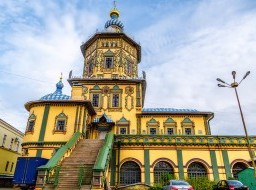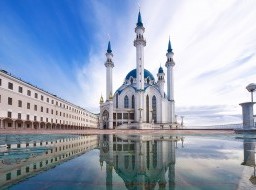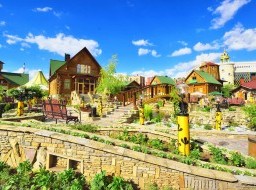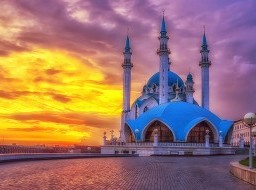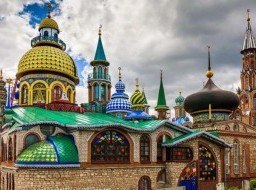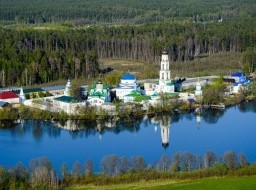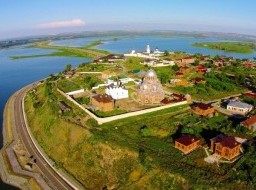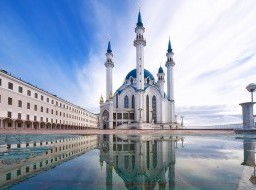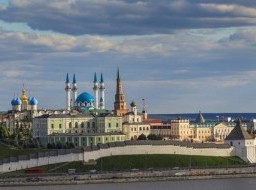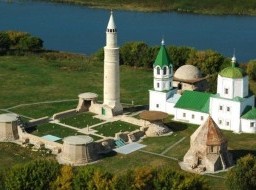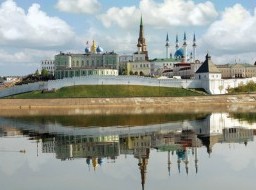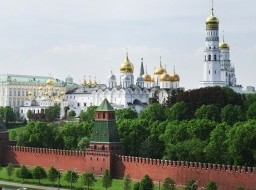Al-Marjani Mosque
Empress Catherine II returned from her 1767 trip to the Kazan Governorate so impressed by what she had seen and by local hospitality that she issued a decree allowing the construction of mosques in stone. She issued another decree in 1773, "On the Tolerance of All Faiths," which made life much easier for Moslems. Al-Marjani was one of the first two mosques built following the occupation of Kazan by the troops of Ivan the Terrible. The mosque has previously borne two other names: Yunusov (in honour of its local merchant patrons), and Efende (Seigniorial). Opened in 1771, it quickly became the Islamic heart of the city. Al-Marjani is a two-storey building in the Saint Petersburg Baroque style, with a three-tier minaret. The architect of Al-Marjani is assumed to have been Vasily Kaftyrev. When some local residents complained that the 30-metre (98-foot) tower was too tall, Catherine II famously replied, "I gave them a place on the ground, but they can soar up to the sky as high as they want." The mosque was expanded a few times and received an open-work fence in 1887. The mosque was eventually named after Shigabutdin Marjani, who was its Imam in 1850-1889 and one of the first Tatar historians. The Islamic school he opened taught geometry, history and astronomy, as well as divinity. Al-Marjani was the only Islamic house of prayer remaining open in Kazan during the Soviet decades. Located next to the mosque are the Kazan Mukhtasibat (administration of the Spiritual Authority of the Moslems of Tatarstan), Kazan Islamic College, and some shops selling halal foods, Islamic literature and symbols. |


